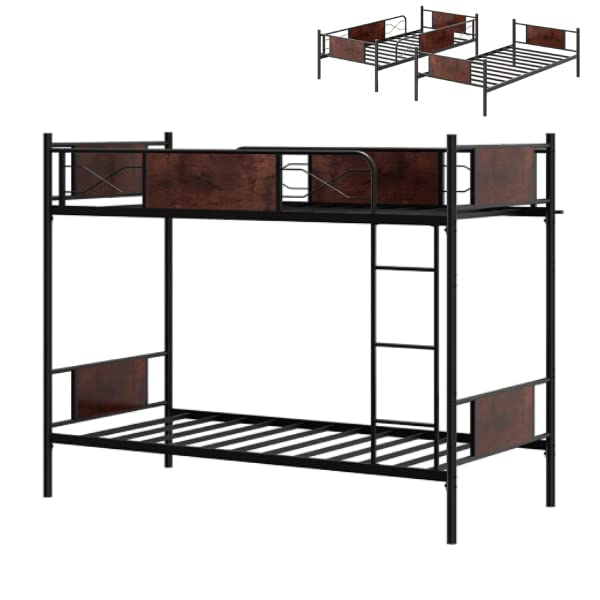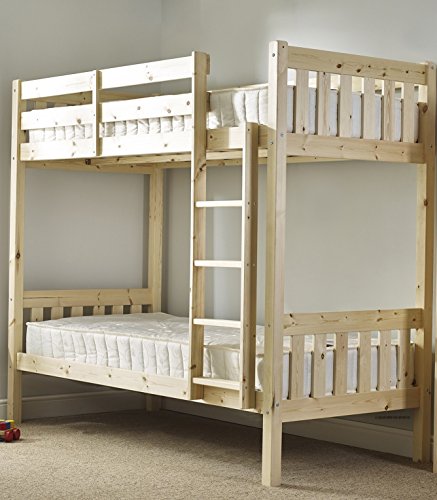
Bunk Beds Store
Add a review FollowOverview
-
Founded Date 25 Feb, 1993
-
Sectors Technology
-
Posted Jobs 0
-
Viewed 46
Company Description
See What Kids Beds Bunk Beds Tricks The Celebs Are Making Use Of
Kids Beds Bunk Beds
 Bunk beds are ideal for maximizing space in a small room. Children love them because of the challenge of climbing to the top and for being able to look out over their peers heads.
Bunk beds are ideal for maximizing space in a small room. Children love them because of the challenge of climbing to the top and for being able to look out over their peers heads.
This bunk bed is made of eco-friendly New Zealand pine wood and is free of phthalates (it is free of DEHP, DBP, BPA, or PBDE). It is available in a variety of colors and can be divided into two beds after your children are no longer using it.
Ladders
A ladder or staircase will provide the most secure way for children to access their bunk bed. Ladders are available in a variety of designs and configurations. From the standard twin over twin beds that can be used by children on top and bottom, to full over queen or double over double bunks. The ladders are available in different heights so that your kids are comfortable climbing up to the top. They can be permanently anchored to the frame, or are removable in certain models. They might also come with an edging to ensure that children who sleep on the ladder’s top don’t fall.
Look into a bunk bed that has a ladder at the bottom for those who want to save space. Instead of the standard ladder that extends from the frame’s side, this type of ladder is attached to one end of the bed, freeing space on either side for seating or other bedroom furniture. These bunks work well in shared rooms or small spaces. You can easily change the layout of the bunks as your children get older.
Ladders are a fantastic option for older children who are able climbers. They are affordable and provide easy access to the upper bunk. They are also an ideal choice for smaller kids, especially those who have mobility issues and joint issues. If you’re searching for a bunk that has a ladder, look for features such as grooved anti-slip steps and hand hole cutouts that allow for easier climbing.
Stairs are a more traditional way to access the top bunk. They are safer for children, and they are also a great choice for adults who want to avoid the risk of falling off the bed when climbing. They also make up less floor space than ladders for bunk beds, and are a great fit for smaller rooms.
When it comes to finding the right kids bed bunk beds for your family it’s all dependent on various factors, such as space requirements, age ranges and safety issues. Whether you choose a bunk with ladders or stairs, Max & Lily has a variety of elegant options to meet your family’s requirements. Shop our collection today to find the perfect solution for your home.
Stairs
There are many options to choose from when it comes down to the design and function of bunk beds for children. From traditional twin over twin styles to full-over futon designs, there are tons of options to pick from that can fit perfectly with any room decor. These beds also come with various features, such as storage space and staircases.
Bunk beds with stairs are an excellent option if you have the space for them in your kids room. These stairs make it safer and easier for them to get to the top bunk, especially when they’re young and learning how to co-ordinate. They also give parents easier access to the top bunk should they have to get up and join their children for a bedtime story or other activities.
Our selection of kids loft beds for stairs includes a variety of models with an integrated staircase that allows you to easily climb up into the bed at night. There are also options with the trundle drawer or futon design underneath the stairway for extra sleeping or storage space. This is ideal if you have guests staying over or if your kids would like to make use of the space for relaxation or studying.
When choosing a bunk bed with stairs, it is important to keep in mind the safety guidelines for children’s beds. Children should be at least six years old before they sleep on the top bunk, and they should also be confident enough to navigate a ladder safely. If your child is younger than this, you may be better to have a bunk bed or loft without stairs until they are able to climb the top bunk.
If you’re tight on space but still want to give your children the benefit of sleeping together in the same room, an ordinary twin-over-twin bunk is a fantastic option. These bunks are available with a range of climbing techniques, including standard and leaning ladders and wooden or metal guard rails that are placed on top. You can also find bunk beds that have storage or a trundle to accommodate guests and sleepovers.
Separate Beds
A bunk bed is a great option for children who share a room and want to save space by merging two beds into one. It’s important to note that some children may not be ready to sleep on a top bunk until at least six years of age and they are at ease sleeping high. Think about a loft bed or loft bed with an lower platform for storage of things or a desk to kids.
Many of our loft systems include low-level beds on the bottom level for younger children, and a full-size bed at the top for the older kids. This gives both children own space to study, sleep and play – and lets parents take advantage of the floor space beneath the beds to put in additional children furniture such as furniture, a dresser, or desk storage. Select a loft-style system that has desks or a built-in desk with plenty of storage space beneath.
Some designs include separate twin beds on the upper level for each child. This is a great option for children who will be sharing a room after they have outgrown their toddler or crib beds. These designs are often referred to as twin over twin bunk beds and can be found in a variety of design options, from traditional to modern. Many of these designs come with a standard ladder or staircase for easy access to higher levels, as well a trundle that can be removed from under the twin bed for sleepovers.
Be aware that kids might change their preferences over time and prefer to have separate twin beds instead of bunk beds. This is why it’s essential to think through your kids bedroom layout before you start so you can decide whether or the bunk bed is the best option for them. Most bunk beds for kids can be converted easily into twin beds for each child.
Age Rating
There isn’t a universal age that will tell you the time a child is ready for a bunk bed. Typically, kids are ready to move up to a top bunk when they have outgrown their toddler bed and have enough dexterity and judgement to safely climb a ladder. However youngsters as young as five or six years old may be successful in the top bunk if they’re peaceful sleepers and have a good sense of balance and coordination.
It is also crucial to consider the maturity level of a child in determining if they are ready to sleep in a bunk bed. They must be aware of the importance of adhering to safety guidelines, and they should have the physical ability needed to climb up to the top bunk. Additionally If roommates or siblings are using the bunk bed, take into consideration their relationship and how they can get along.
When selecting a bunk bed for children the most important aspect to think about is its overall quality and safety features. Make sure that the bunk bed has sturdy guard rails on both sides of the bed, and that the ladder is secured. It is crucial that the height and length of the ladder from the ground up to the top bunk are appropriate for the child’s height. Be sure to leave enough space for the child move around and ensure that the bunk bed isn’t blocking windows or doors.
While some of these issues may seem trivial It is crucial to consider the safety of a bunk bed before installing it in the bedroom of a child. If you are unsure whether your child is able to handle a bunk bed, think about consulting with a pediatrician or a specialist in furniture for children to assess their age and safety level.
 Bunk beds can be an excellent way to save space in a child’s room, and they encourage an atmosphere of camaraderie among siblings. However, parents must be vigilant about assessing a child’s readiness for a bunk bed, especially the top bunk, and to ensure that the bed meets the safety standards of all essentials.
Bunk beds can be an excellent way to save space in a child’s room, and they encourage an atmosphere of camaraderie among siblings. However, parents must be vigilant about assessing a child’s readiness for a bunk bed, especially the top bunk, and to ensure that the bed meets the safety standards of all essentials.
